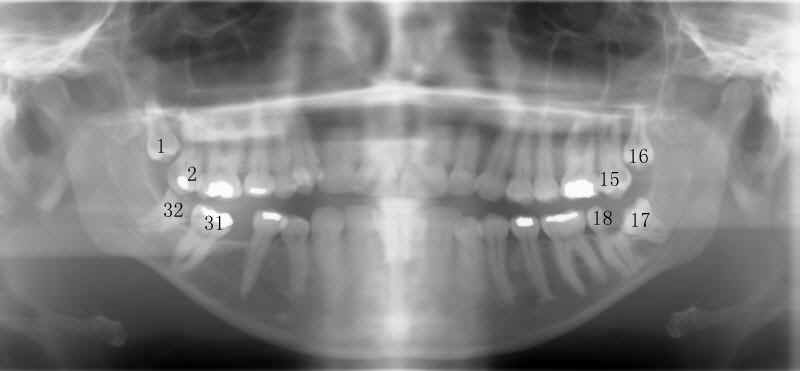 |
|||
|
Fig.1 |
|||
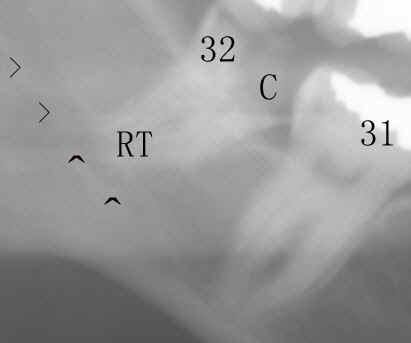 |
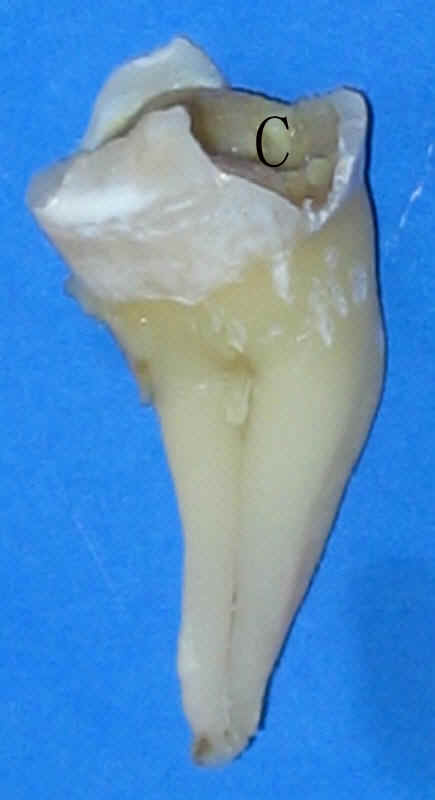 |
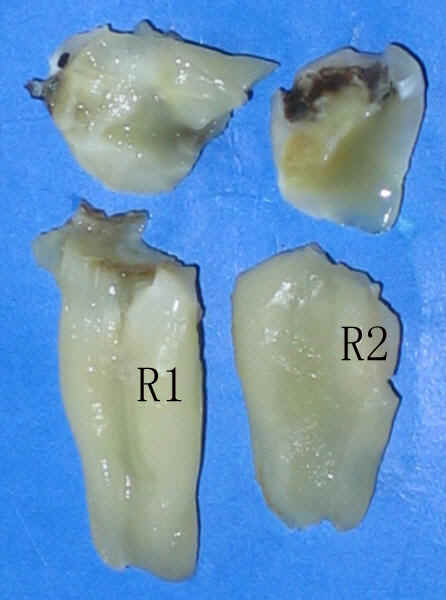 |
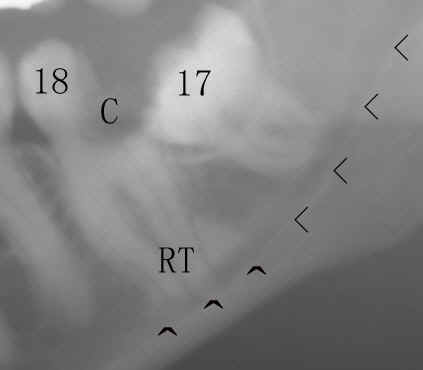 |
|
Fig.2 |
Fig.3 |
Fig.4 |
Fig.5 |
Dental Education Lecture: Early Extraction of Wisdom Teeth
 |
|||
|
Fig.1 |
|||
 |
 |
 |
 |
|
Fig.2 |
Fig.3 |
Fig.4 |
Fig.5 |
We recommend preventive extraction of wisdom teeth if our adolescent kids participate in active contact sports in the last lecture. We are going to recommend early extraction of pain-free, but mal-positioned wisdom teeth. Why?
Last week a 26-year-old woman with 5-month pregnancy visited our office for removal of two of her bottom teeth. These two bad teeth bother her so much that she could not eat properly. Although there is some risks associated with tooth extraction during pregnancy, we had no choice.
Exam revealed that four wisdom teeth (#1,16,17,32 in Fig.1) are not in a normal position. The upper wisdom teeth (#1 and 16) are not completely grown out, whereas the bottom wisdom teeth (#17,32) are in a weird position (side way). As we know, it is difficult to clean our last teeth in the back. When our wisdom teeth are in awful position, cleaning is much harder. It is easy to have cavities and/or gum diseases in these areas. The wisdom teeth may get cavities (#32 in Fig.1 and 2). The neighboring teeth (#2,15, and 18 in Fig.1 and 5) may also be affected by cavities.
It is not so easy to remove badly broken down teeth such as #18 and #32. To make thing worse, the two teeth have very long roots (you may understand the point better if you compare with another case). The doctor needs to cut the gums, and selectively remove some of bone around these teeth to reduce extraction resistance. The extraction of #32 was relatively easy; the whole tooth came out intact (Fig.3). It turned out that extracting #18 was much more difficult. We had to cut the roots into four pieces: wriggling each of them one by one (Fig.4). R1 and R2 represent two of root tips of the tooth #18.
Our wisdom teeth start to come out around the age of 16-18. At that time, their roots are much shorter. As time goes by, the roots become longer and longer, closer to the underneath nerve. In Fig.2 and 5, RT stands for root tip, whereas arrowheads point toward the nerve. There is inherent risk of damaging the nerve during bottom molar extraction. The longer we wait for wisdom tooth removal, the higher chance of nerve damage during root tip retrieval. This nerve provides us with sensation of our lower lip. Normal sensation of our lip is very important to our eating and kissing our loved ones. With injury to the nerve we feel the bottom lip numb, just like the way when the dentist numbs us for lower tooth filling. The numbness may last temporarily (for several months) or permanently, depending upon the degree of nerve injury during surgery.
If this lady had had a chance of taking out four of her wisdom teeth early and had then practiced brushing and flossing normally, there would have had less chance of developing cavities in the 2nd molars. It would have been easier for everyone involved, including the developing baby in the womb. During extraction, the mother reported that the baby was kicking hard. The poor, innocent baby sensed that somebody was hurting her mom. However, this case turned out fine..
Procrastinating wisdom tooth extraction may lead to serious complication when we get old. This is the topic of our next lecture. See you then.
In addition, the elongating root of the wisdom tooth may bend and create surgical problems.
Xin Wei, DDS, PhD, MS 1st edition 05/03/2009, last revision 07/05/2009